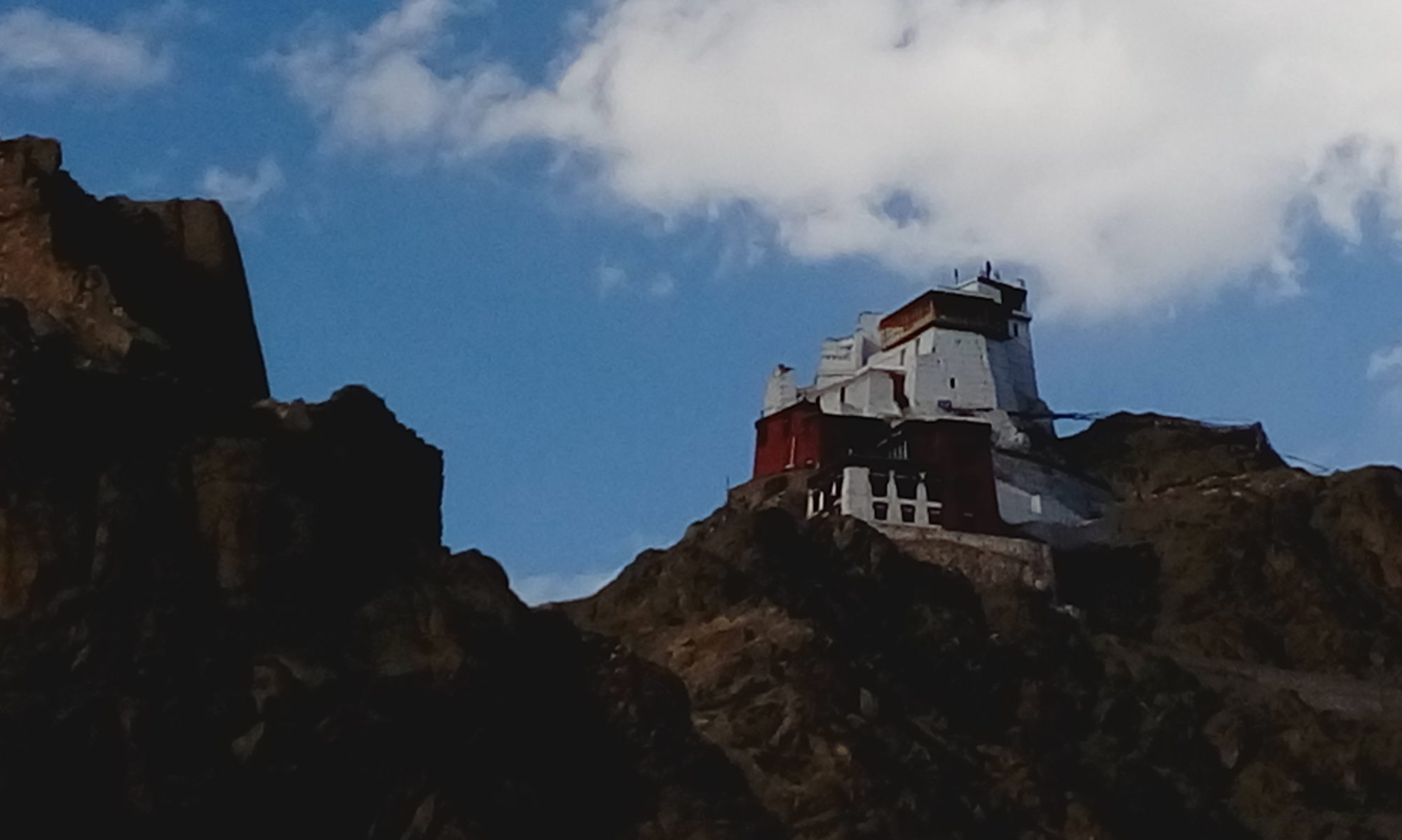Right now I am in that category, if there is one that is, before the amateur birdwatcher. The ones who get mighty excited but have little clue which bird is it that has got them excited. It does not help that a lot, and I mean a lot of birds are just brown or grey and these two colours look just that- brown and grey! The man is of a similar species and together we are a pair of excitable things flapping our arms whenever we see any remotely unrecognizable feathered friend.
So while Bikaner is not a place that pops up on the birding map rather it typically conjures up visions of camels, palaces and gastronomical offerings, Covid restrictions have ensured we are yet to sample any of these visual or palatable delights. The past year has been one of rediscovering the great outdoors and Bikaner has ample of that. What we are also discovering is that Bikaner is pretty much a pit-stop for anyone travelling through or over Rajasthan. Our landing coincided with the winter birding season. Two places we were told about and the others we discovered while hunting for picnic spots.
Read where all the camels get to in- At the Darwaza of a Road Less Travelled
Kolayat–
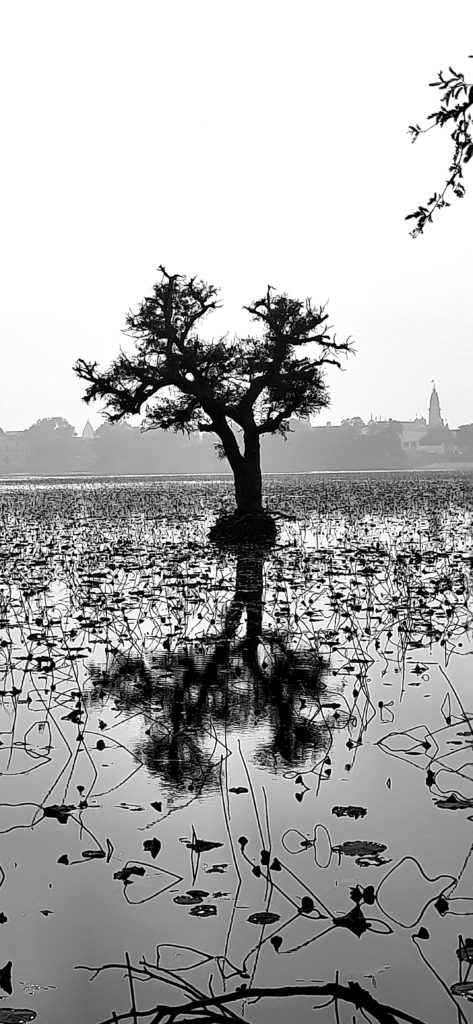
The town’s claim to fame is the ashram of the sage Kapil muni, a fair, ancient temples and now probably the mines around. The day we decide to go dawns a grim grey. The plan is a picnic at Gajner but we find no suitable place so Kolayat it is. Enroute we see giant mounds of the earth’s insides dredged and lying piled up. The temples and their ghats are lined up on one side of the lake which is overrun with dormant lotuses, ie, all twigs and no flowers or leaves in sight. They make for surreal pictures. A little egret muddies the water further with its toes near the banks trying to get its lunch to rise from the lake bed. The only birds clearly discernible are the Pochards and the Grey Francolins. They are literally at our feet, coming out of the bushes for an afternoon drink. It’s a day of the greys.
Lunkaransar-
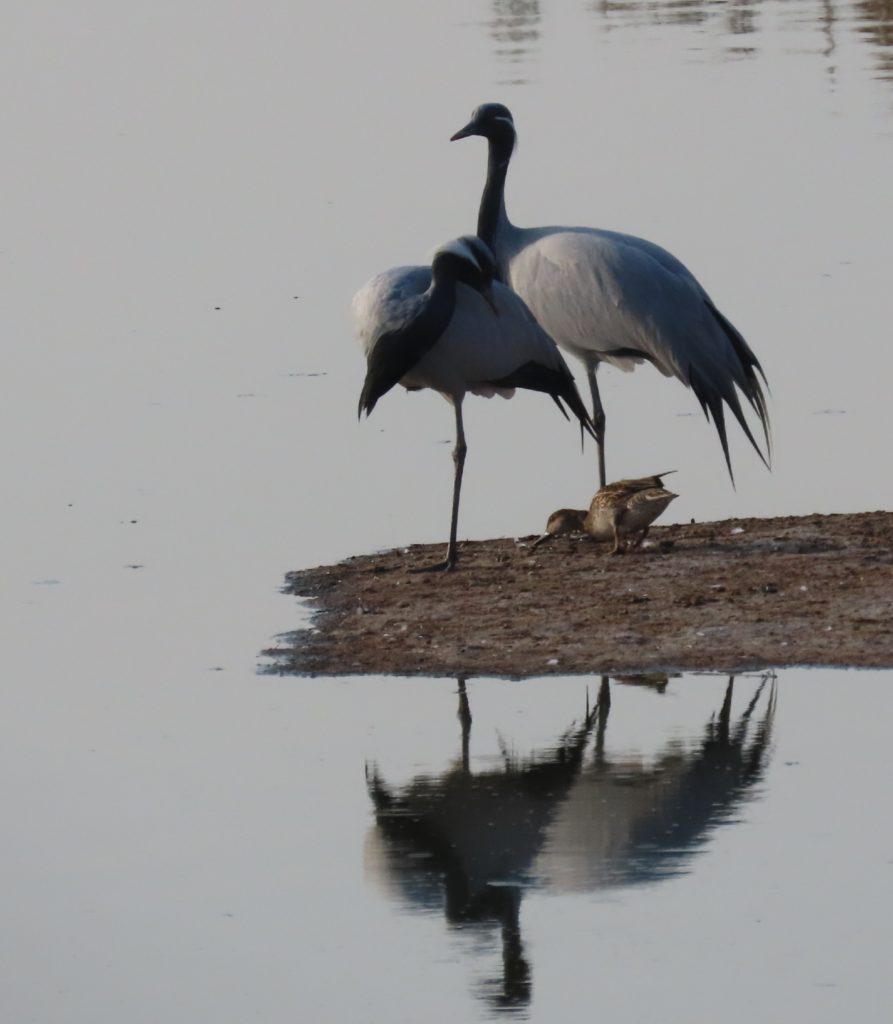
The Demoiselles have been sighted I’m told and I’m itching to see these daintily named cranes. When we finally do make it, its a foggy morning again! The water is murky in the ‘lake’ hugging the road. The hazy morning ensures the light is not conducive to any great photography. As it is the subjects are grey, black and white mostly, with the teals breaking the monochrome setting with flashes of eclectic green and burnished gold. Most of the birds are snoozing, one leg tucked in, beaks buried in their back feathers. There must be a yoga pose named after this stance… the spinal twist perhaps?? The Demoiselles on an island, looking down gently at the ducks waddling between their legs, make a poetic grayscale Japanese painting but the man is not impressed. These grey bearded things? He prefers the Pied Avocet with its upturned curving beak. From the flat pans beyond some cranes take flight en masse, stretched silhouettes clouding the sky further.
Jaimalsar-
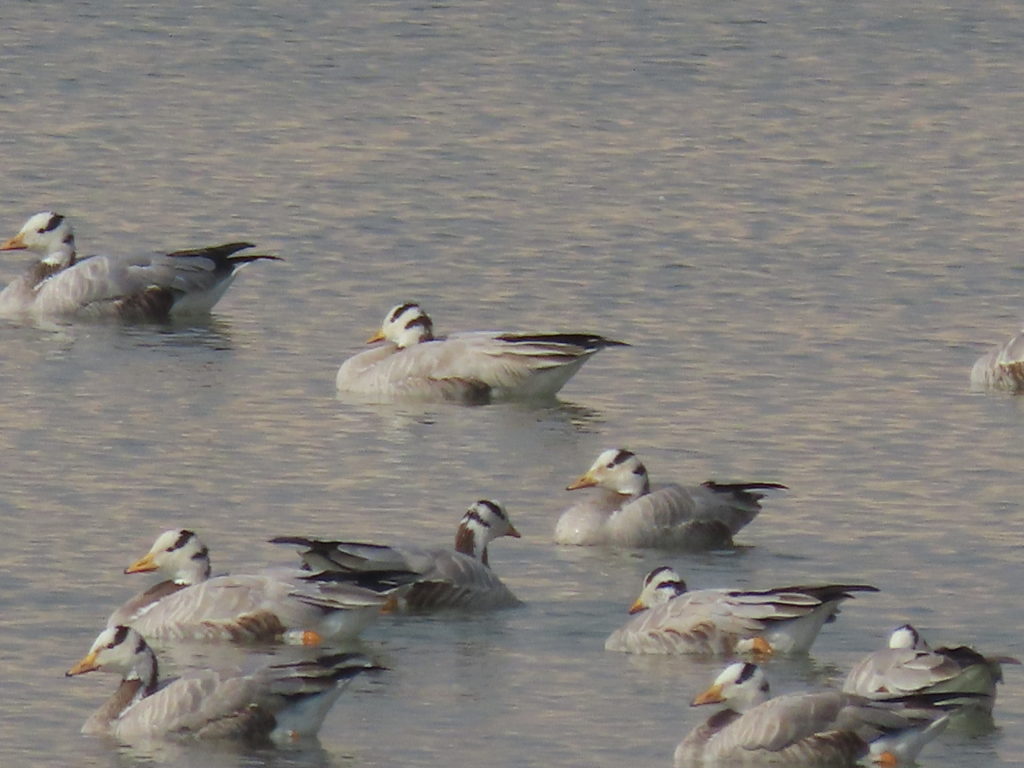
The massive water filtration reservoirs near Jaimalsar are newish but the distinctive Bar-headed geese seem at home and are a delightful surprise. I see Dalmatian pelicans for the first time and the solitary pair has impressive wingspans as they skim the water. The grey herons get the man excited. I suppose for herons they are big but obviously the cranes had come up short!
Read about the geese’s summer home in- Chushul & Chumathang – Hello Indus & Iridescent Colours!
Jorbeer-
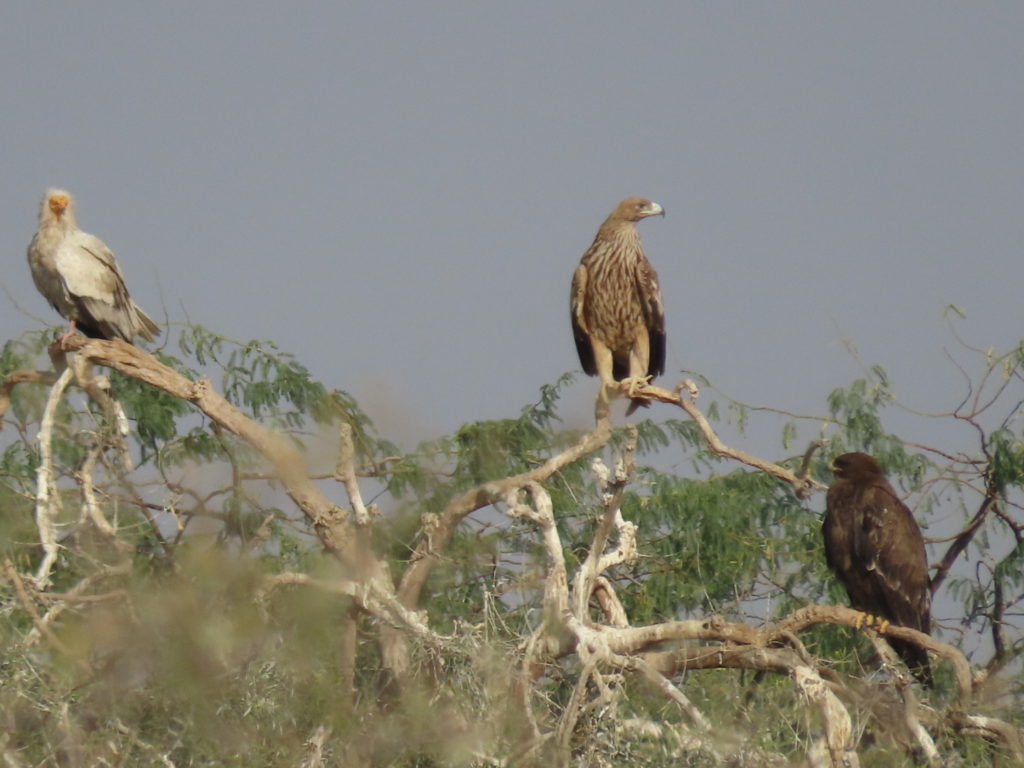
‘People go straight in and get a shock’, says Dr.Jitu Solanki as he gently eases us into the Jorbeer carcass dump turned vulture sanctuary. I had reservations with visions of gore and stench but thank god we asked him to show us around. The naturalist’s passion has made him come on a Sunday morning to show us this unusual place and his knowledge on all things natural and native to this region elevates the entire experience. By the time we enter after getting an eyeful of the Cinereous and Egyptian vultures from across the boundary wall, we’ve had a crash course into the pecking hierarchy of the raptors and other birding tidbits and are too hooked onto the birds to notice their meals. Coming away I hope I’ll be able to spot a Himalayan from a Griffon vulture, although the golden crown of the Imperial eagle may be too subtle for an amateur needing a blingier beacon. I would have gone cuckoo trying to identify the Variable (true to its meaning!) Wheatear and would never have spotted the teensy Desert Jird. One thing is definite, the mild revulsion has totally given way to dreaming of a juvenile looking right out of Jungle Book as he looked over his shoulders, his chocolaty round eyes saying don’t come closer or I’ll have to move and its too early and cold to leave my perch.
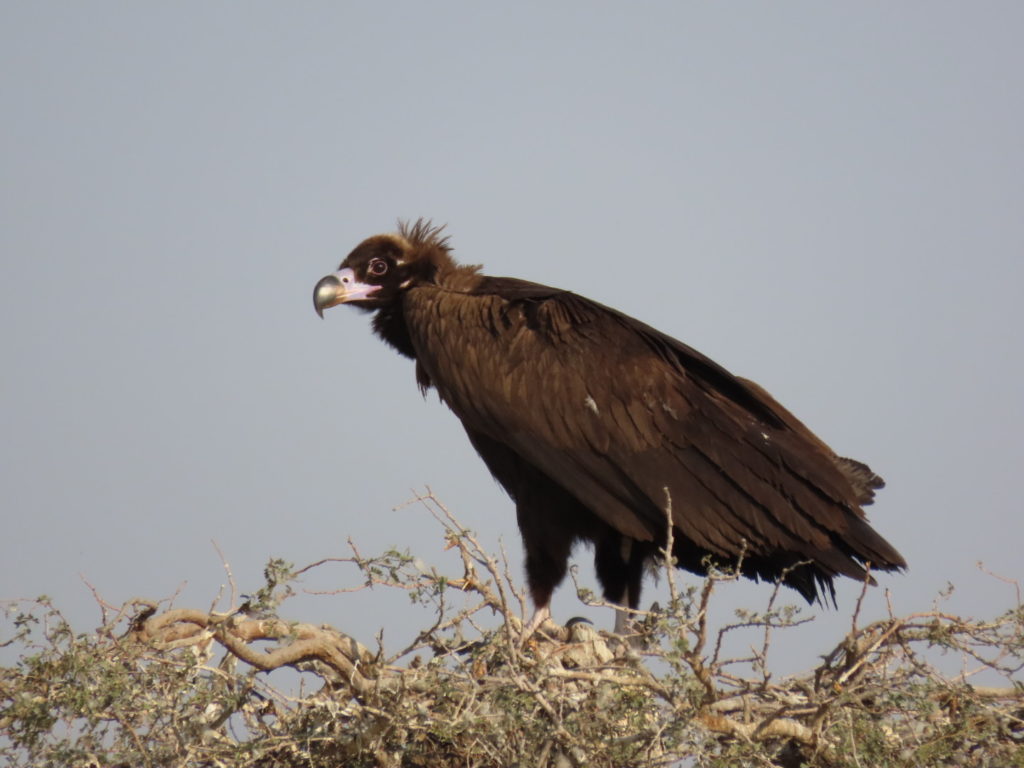
The other great adventure in Rajasthan was at- Ranthambore Alert -Ticketing Trials and Tiger Trails
Gajner-
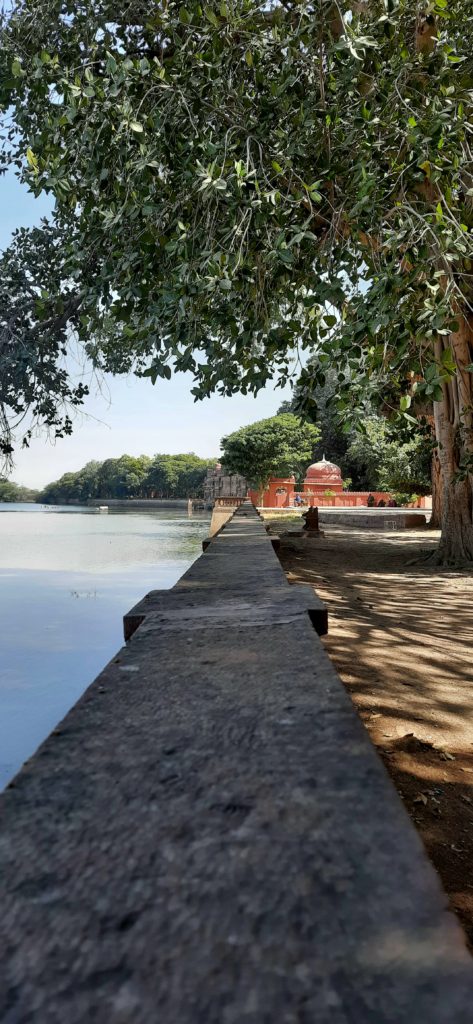
Overlooking a small lake the ornate shikarbari of old is now a hotel. It isn’t a birding place as such but it makes a pretty sight with the black bucks chasing each other and the wild boars foraging with their piglets in the background, and closer a few Grebes, a lonesome Bar-headed geese and a solitary Eurasian spoonbill with its thick chopstick like beak sweeping and shifting the shallows complete the picture. Across the lake a massive Bluebull emerges from the thicket sending the coots scurrying. A few Demoiselles keep to themselves far away. There is a wide canopied boulevard of banyans lining the embankment and probably houses owls but right now it’s alive with the cacophony of a bazillion parrots all wanting to have their say, two of whom so entangled in their fight don’t realize they have now fallen literally at my feet in a mass of screeching green, feathers flying. I don’t know who is more taken aback!
Discover monuments and endangered birds cohabiting in- Part One- On the Wild Side of Outstanding Orchha
If this season’s sampling of the avian smorgasbord is anything to go by Junagarh fort might soon be replaced by Jorbeer at the top of the local attraction pecking order. Thanks to Dr. Solanki, an avid birder, biologist and herpetologist we know there is a packed natural calendar year to look forward to in this underrated town.
Fact File-
Distances from Bikaner-
Lunkaransar – 72 kms.
Jaimalsar – 51 kms. Entry into the Water Treatment plant is restricted.
Kolayat – 51 kms.
Jorbeer -12 kms. The Jorbeer Conservation Reserve is supposed to be open from 7AM to 6PM. But we went at 8AM and it opened half an hour or so later.
Gajner- 29 kms. The entry to the sanctuary is through the hotel gates only and there is a charge of Rupees 250/- per person.
